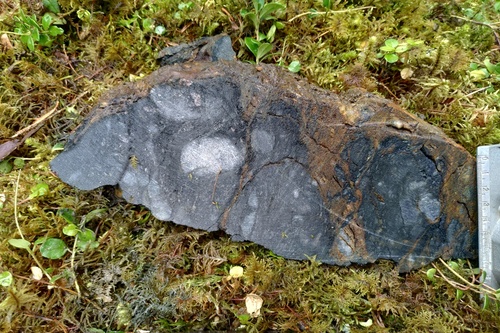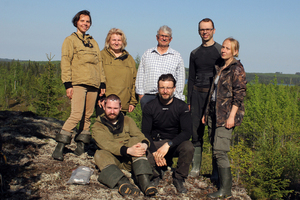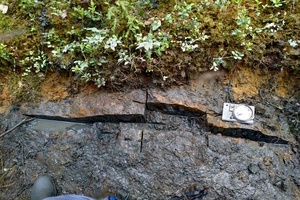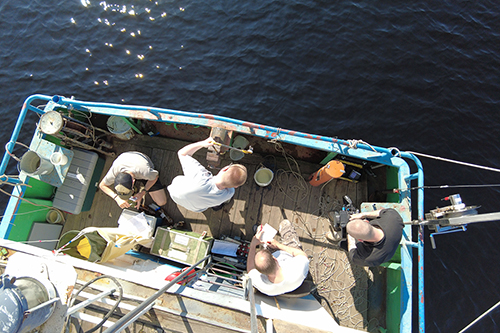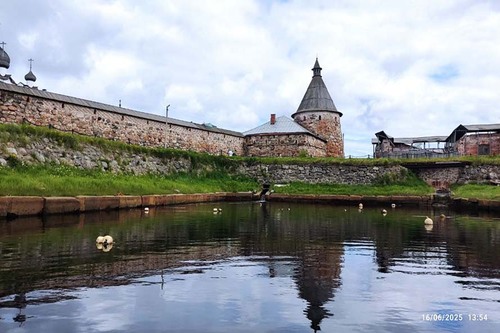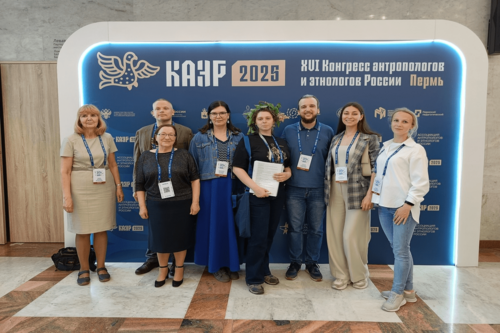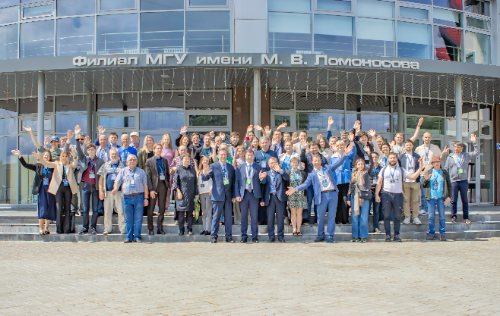– Ferric quartzites were formed mainly through oxidation of bivalent iron (Fe2+) dissolved in seawater, which entered the water from hydrothermal vents, so-called “black smokers”. On the early Earth, there was practically no oxygen in the planet's atmosphere, and so there was none in the ocean waters, therefore iron was not oxidized, but accumulated in the ocean water in dissolved form, like in our Marcial Waters deposit, for example. However, some zones of the ocean inhabited by ancient colonies of cyanobacteria acquired oxygen through the activity of these organisms. There appeared “oxygen oases”, where small amounts of iron were oxidized, forming separate layers of future ferric quartzites. When the oxygen ran out, only silica was precipitated, from which light-colored (quartz) interlayers of the BIF were formed, - explained Natalia Nesterova, Senior Researcher at the Laboratory of Precambrian Geology and Geodynamics of the Institute of Geology KarRC RAS.
Scientists at the Institute of Geology have been studying ferric quartzites since the discovery of the deposit and have contributed greatly to its development. They distinguished three types of ferric quartzites in rocks of the Kostomuksha belt, which differed in composition and position in the profile. However, the analytical capabilities and general knowledge of our planet in the past century were inadequate for finding out the true causes of the patterns identified.
Comprehensive study of the formation environment of Kostomuksha BIFs using modern high precision methods is the subject of a new project by the Institute's scientists. They are convinced that a detailed study of the chemical composition of these rocks will provide new scientific knowledge about the geology and geodynamics of the early Earth. This year, the team is completing the study of ferric quartzites under Russian Science Foundation grant ¹ 22-17-00026.
As explained previously by the author of the study, Head of the Laboratory of Precambrian Geology and Geodynamics of the Institute of Geology KarRC RAS Alexander Slabunov, this layer of ferric quartzites is of the least interest for the economy, as it contains the lowest amount of iron, but it is of great interest for fundamental science.
– At present, a fundamental question of geology remains unresolved: what geodynamic processes facilitated the formation of the ancient (Archean) mature continental crust, were they similar to the modern ones or significantly different, what the role of biological systems was. The study of BIFs is crucial for understanding what the environment was like in that distant geological epoch, – said Alexander Slabunov.
In a new article published in the Geochemistry Journal (English version is Geochemistry International), the researchers elaborate on the most ancient among the Kostomuksha deposit’s BIFs, formed 2.87-2.83 Ga BP (BIF 1).
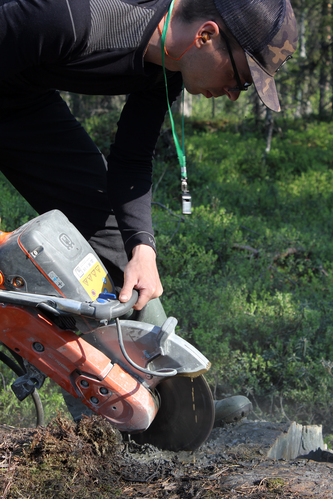
Rock sampling with a diamond blade disc saw by Oleg Maximov, researcher at the Laboratory of Precambrian Geology and Geodynamics IG KarRC RAS. Photo by Sergey Mudruk / Geological Institute, Kola Science Centre RAS
The chemical composition of these rocks indicates there was no oxygen in the seawater where they were accumulated, but iron oxidation still occurred, suggesting that the oxygen concentration in the basin occasionally increased, i.e. an “oxygen oasis” emerged, probably due to the activity of cyanobacteria.
– Our studies also showed that BIF 1 formed in small rift valleys within an underwater oceanic volcanic plateau. This structure was shaped by a mantle plume - a hot magma flow from the Earth's interior, similarly to the modern Hawaiian Islands, - Natalya Nesterova summarized.




